Pes Anserine Bursitis
Symptoms: Pes anserine bursitis presents as inner knee pain below the knee joint. Pain with walking, running, and walking down/upstairs. Treatable non-surgically within weeks to months with complete recovery probable.
Hi, I’m Sebastian.
This article will share effective non-surgical treatment options for pes anserine bursitis and other reasons for inner knee pain. I’ll also be covering common signs and symptoms.
If you want to jump right to the effective non-surgical treatments, search the end of the article (but you’ll be missing the context for the exercises).
The pes anserine (also known as pes anserinus or anserine bursitis) is a condition of painful inflammation of the pes anserine bursa below the inner knee. The pes anserinus tendon, known as the “Goose Foot,” is the conjoined tendon of three tendons that looks like a goose’s foot in human dissection. Inflammation of this tendon is called pes anserinus tendinitis.
The muscles that form this tendon are the sartorius, gracilis, and semitendinosus muscles. There are no pes anserine muscles. The location of tendinous insertion is located on the tibia (shin bone). The pes anserine bursa resided under these tendons, between the goose’s foot and the tibia bone.
The bursa is a normal occurring fluid sac that functions as a friction pulley to decrease tendon rub as the bone.
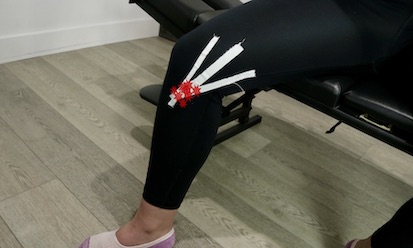
Wanting to understand human anatomy and biomechanics is normal when you are experiencing pain in your body. Yet, you do not need to become an expert in the medical field to get better.
It would help if you had to follow a customized mobility, stability, and strength program.
Understanding HOW the body works is just a bonus.
Later in this article, I’ll show a few exercises that work VERY well for inner knee pain, like pes anserine bursitis. Skip ahead if you need, but I’d strongly suggest using the resources/ links I have provided in this article.
If you feel ready to take action to get rid of your inner knee pain once and for all, book a session with us (tab at the top of the page) or reach out to us to ask us questions about how we can help.
We are in Costa Mesa, CA, but we can help people virtually very effectively if you can’t make it in person.

What Does The Pes Anserine Bursa Do?
As mentioned above, the pes anserine bursa normally functions as a pulley to help reduce friction between surfaces.
As you can see, your knee has a lot of movement available in forward and backward motions. The pes anserine bursa is in the perfect location to help tolerate these significant forward and backward actions.
Under normal circumstances, the pes anserine bursa is not irritated or swollen since the compressive forces placed upon it are within its tolerance limits. Yet as we have all discovered at the beginning of every spring/summer, sometimes we go beyond our body’s tolerance.
What am I talking about referencing?
Sunburns!
Our bursa, just like our skin, has a tolerance that can change as you gradually expose your body to challenges.
In the cases of sunburns, your skin has been exposed too quickly to the sun’s rays and has a rapid and painful response.
With pes anserine bursitis, rapid exposure to running, jumping, HITs training, or walking can be enough to create a production of excessive fluid and inflammation of the bursa.
Inner knee pain will rapidly follow.
A rapid increase in physical activity is not the only cause of pes anserine bursitis. There are plenty of seasoned runners and triathletes who suffer from this type of overuse knee injury.
In these situations, a trained eye can help you see if your body lacks function in other regions of your body that are producing overuse of the knee and the bursa.
Consider the Mobility, Stability, and Strength Model when looking at your overuse knee injury.
Have you had any recent aches/ pains on the OTHER leg?
- Plantar fascia pain
- Knee pain
- Groin
- Lower back
- IT Band
Perhaps you have had a chronic niggle on the other leg that you’ve managed for years with a foam roller or stretching?
When discussing overuse injuries that are not from activity spikes, you have to look at it another way.
What is not working (dysfunctional and not painful) to make my pes anserine hurt?
Using a simple squat movement assessment (in-person or Zoom), we have found countless athletes placing MORE weight on their injured knee than on their “good one.”
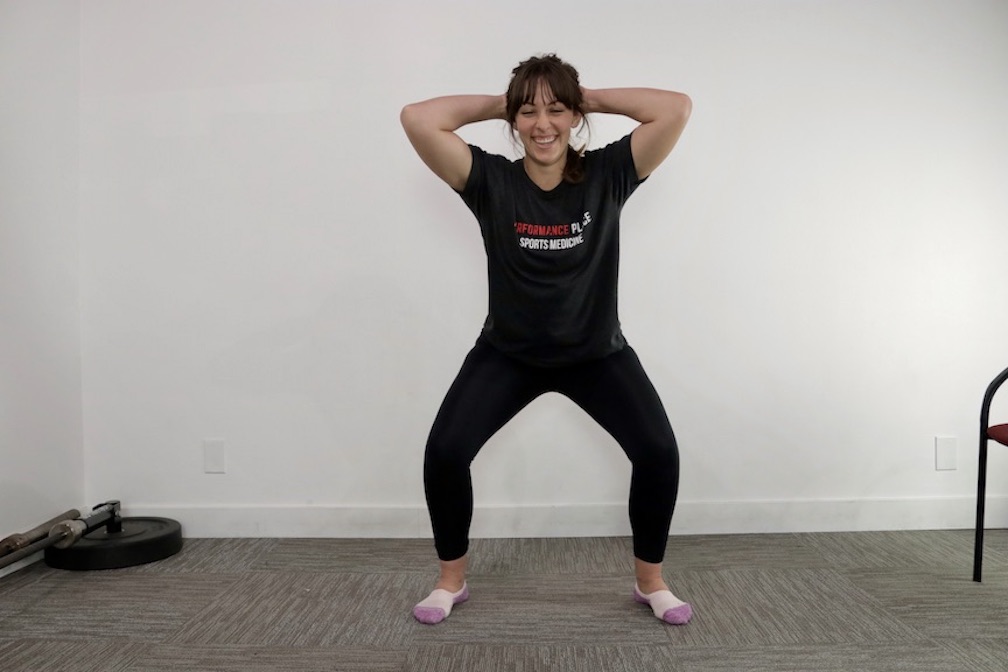
This doesn’t make any logical sense.
If you were in pain, you wouldn’t be putting more weight on your painful knee? Let’s call this an “underutilization injury.”
Watch this Youtube video I created on the Mobility, Stability, and Strength Continuum and how it pertains to the knee when you lack ankle mobility (perhaps from old sprained ankles). Lack of complete hip function is another typical underutilization injury driver.
We use this style of programming at our clinic and have experienced rapid results!
If you want to know how we do it, our 12-week Performance Place Knee Program is available here.
Does Arthritis Cause Pes Anserine Bursitis?
People with arthritis of the knee and hip can experience pes anserine bursitis, but not all do?
Allow me to draw your attention to another Youtube video I created to prove this point.
This video demonstrates a non-surgical therapy called skin rolling. Skin rolling reduces “arthritis” knee pain with about 1/2 of the people who try it.
Read all of the comments below the video, and you’ll see I’m not making this up.
If you have been told your arthritis is the cause of your knee pain, yet rolling skin works, you may be in for a pleasant surprise. You can get better rapidly, as you can see. Now you need to reverse engineer HOW you developed this painful situation by addressing your dysfunctional/ non-painful areas.
We address these areas in our programs via the Mobility, Stability, and Strength Model as we discussed previously.
Here is another Youtube video that demonstrates how something like arthritis/ immobility in other joints can create knee pain.

Who Gets Pes Anserine Pain?
- Deconditioned individuals who build activity too quickly
- Runners
- Sprinters
- Swimmers
- Baseball Players
- Soccer Players
- Tennis Players
- Squash Players
If you are under 20 years old, you may get different diagnoses than people over 30.
You may have been to many doctors, physical therapists, chiropractors, or orthopedics who tell you different diagnoses if you are younger. You’ll most commonly get hamstring tendonitis, patella tendinopathy, grown pains, sprained knee, or overuse injury.
If you are over 30, you may have been told you have early onset arthritis, medial meniscus tears, MCL sprains, or adductor strains.

Special Images: Xray and MRI
You may have already had the idea that an x-ray or MRI can diagnose your reason for inner knee ache and swelling. The truth is x-rays have little diagnostic value, as they only see alignment and cortical fractures of the bones. They do not see soft tissue well.
MRIs can be used to rule out other diagnoses but should not be used before six weeks of treatment. MRIs can mislead a client about their cause of knee pain, as often time with inner knee pain; it is “normal.”
MRIs can see swelling and soft tissue damage, but this does not give us more information to write a program for you as most reasons for knee pain will still be a rehabilitation case.
Pes Anserine Bursitis Symptoms
Pes anserine bursitis symptoms vary from person to person, based upon their actual diagnosis/ root cause.
Here is a list of what many people experience:
- Worse with running, walking, or jumping
- Better with rest
- Burn and throbbing on the inner side of the knee
- Feeling unstable with twisting knee
- Knee stiffness in the morning
- Painful to touch
- Minor swelling below the knee joint line
- Light snapping/ clicking
You may not be experiencing all of these symptoms. They are more common the longer you have your problem.
Movement compensations tend to create a cascade of associated symptoms that all reversible with the right treatment program and coaching.
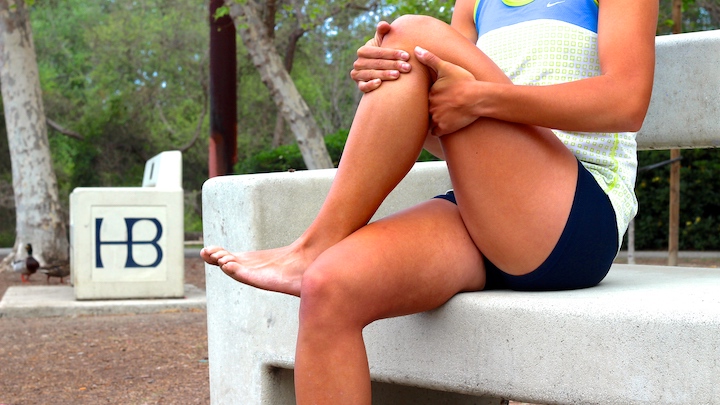
Diagnoses
- Patellar Tendonopathy (our Youtube Video)
- Pes Anserine Bursitis (our Youtube video)
- MCL sprain (normally trauma-based)
- Medial Meniscus tear (smaller)
- Joint instability
- Distal Hamstring Tendonopathy
- Osteoarthritis of the knee
- Cysts of the Knee
- Growing Pains
- Distal Adductor Tendonopathy
We always have to include the rare but possible sinister diagnoses like a tumor, infection, cord compression, and much more.
To learn more about the “Red flags,” go to this website this article. Taking a complete medical history can help assess your risk of life-threatening conditions creating knee pain.
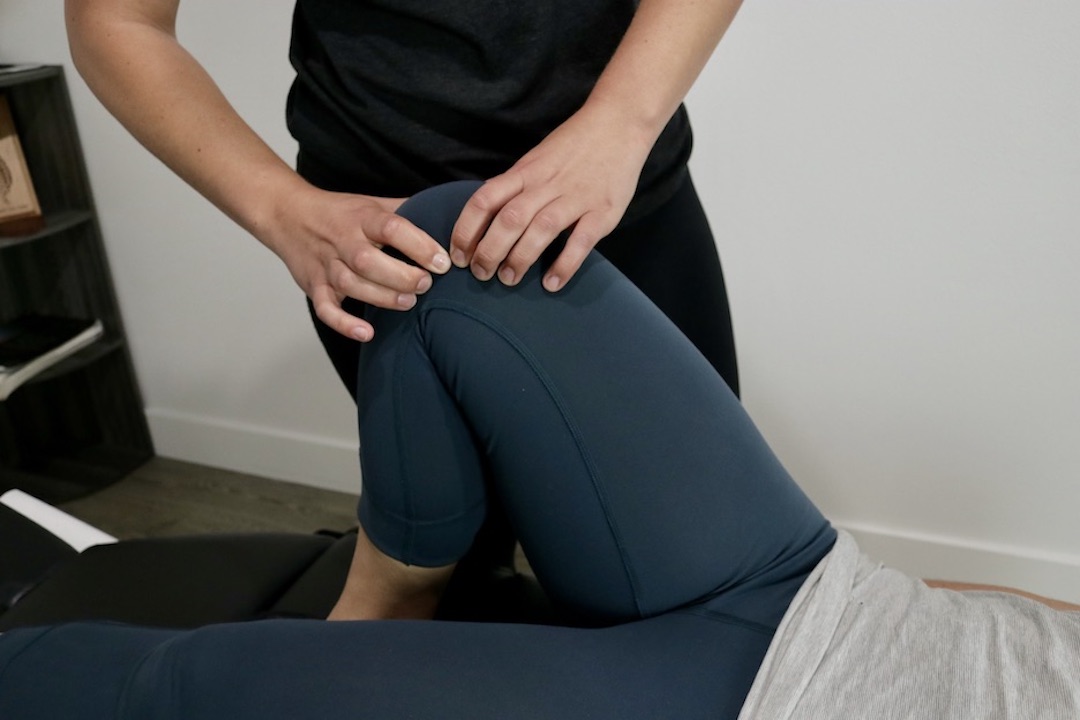
Non-Surgical Treatments
Effective non-surgical treatment for pes anserine bursitis (as well as other types of inner knee pain) includes anti-inflammatory methods, modification of activity, corrective exercise, soft tissue mobilization, and addressing dysfunctional/ non-painful regions of the body that could be creating overuse of the knee.
In my opinion, the best non-surgical treatment for pes anserine bursitis is active care. Active care often needs to be progressed to get you back to the activity you want to do. Passive therapies are great complementary treatments for reducing knee pain and swelling before adding too much active care.
I know all of the “experts,” and your instructor may tell you something else, but hear me out. I’ve been helping clients with pes anserine pain in record time for over 12 years now.
I assure you that progressive exercises to build mobility, stability, and strength within regions of the body are the best plan of attack. A custom program is the best route to go. Exercises can be coached virtual or in-person but are always more productive when coached in person.
Other non-surgical treatments:
Cortisone, Active Release, Rolfing, Adjustments, Prolotherapy, Deep tissue massage; I have tried all of these with many of my clients with TFL trigger points. None of these treatments work better long-term as a customized mobility, stability, and strength program with good coaching.
Cortisone, Active Release, Rolfing, Chiropractic Adjustments, Prolotherapy, stretching your hip flexor, stretching your hamstrings, and Deep tissue massage are great at reducing pain, but they will not keep it away.
As mentioned before, we need to reverse engineer how you got this way. It did not happen in a day, and it won’t return to normal function in a day either!
Performing the correct exercises and stretches over weeks to months will give you the pain-free knee range of motion you desire.
Challenging corrective exercise is the most effective way.
Corrective exercise can also be a very effective way of reducing pain as well. Allow me to prove it to you.
Watch these exercises that work very well for pes anserine bursitis. You may notice a 50% reduction within just a few minutes after doing these.
As a disclaimer, these should feel effortful and painless. Also, know that these DO NOT WORK for everyone. As I mentioned before, your pes anserine bursa could be in a pissed-off state and not be ready for this type of exercise yet. These are the best pes anserine bursitis exercises we have found to work in our facility.
- The Hard Style Plank
- Banded Bridges Youtube video
- The Low Diagonal Sit Exercise
Corrective exercises are like medication. If you do the right one in the right situation, you will be floored about how good it works; then you have to keep that feeling with weeks to months of doing the right program for you.
Note: Some videos may not be live on our Youtube Channel yet. If the video is not live, subscribe and get it when it does.
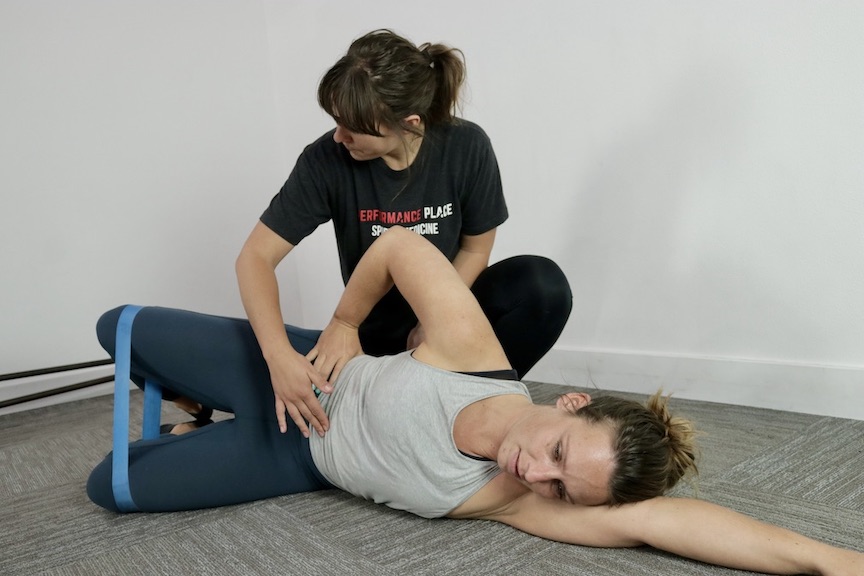
Recap
If you’re serious about getting over your inner knee pain, consider having someone help you. The key is having some with expertise help programming and coach you on what to do.
I can’t vouch for the skill level of every healthcare provider, physical therapist, chiropractor, acupuncturist, orthopedic, and physiotherapist. We all have different strengths and weaknesses. We all specialize in some areas of the body. Myself included.
Off the top of my head, I can estimate that over 95% of clients we have seen with knee issues at Performance Place do not require surgery, medications, or injections to return to sport pain-free. People who recover have all different diagnoses, minus complete ACL tears or a Bucket-handle tear of the meniscus.
Don’t get talked into doing surgery too soon. You can recover! The human body is very resilient, and it can recover full function on its own with most conditions.
I’m Sebastian at Performance Place Sports Care. We can help virtually or in person. We are in Costa Mesa CA. Rather than tell you how great we are, allow our Google Reviews to speak for themselves.
Our clients have some amazing stories of recovery. Begin your recovery story and book your first session with us today!

